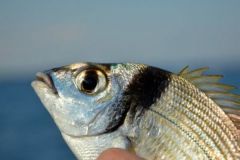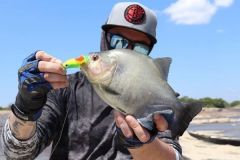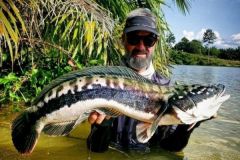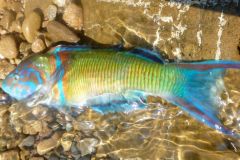Scientific name
Lutjanus rivulatus (Cuvier, 1828)
Morphology
The Maori snapper has a silvery-gray to golden body coloration, with sinuous lines on the head of a discreet blue. Its fins are brown, sometimes with a yellowish border.

Juveniles have a yellow livery with dark vertical stripes on the upper flanks. These stripes fade into the body as the fish grows. Juveniles also have a black and white spot on the back.
Maori snapper fishing grounds
This snapper is found from Madagascar to the Gulf of Oman and in the Pacific Ocean between northern Australia and Taiwan. It can be found on Reunion Island, Mayotte, New Caledonia, Polynesia and the Red Sea.
It lives in shallow and offshore coral reefs at depths of 1.5 to 100 meters. Juveniles like flat algae-rich bottoms, often near freshwater inlets. Adults are commonly found on coastal drop-offs, on live coral or areas of coral debris.
Fishing techniques
This hunter fish works well on jigs and soft lures.
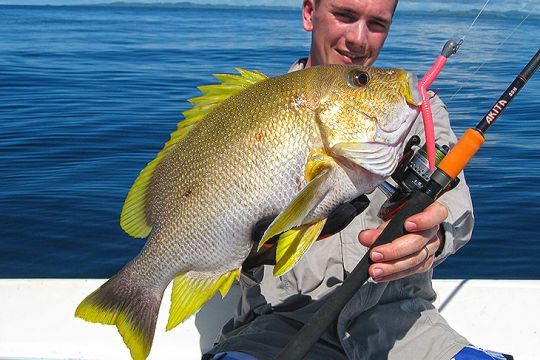
He also takes tenya with pieces of oily fish, squid or shrimp. In fact, he loves fish, cephalopods and crustaceans. He also catches on palangrotte rigs with pieces of oily fish cut into 3 or 4 cm cubes. Use a 4-metre-long fluorocarbon leader to avoid rubbing against the coral that may make up the bottom of the fishing spot, as well as to accentuate discretion in the presentation of the lure or bait.
Reproduction
This snapper breeds from 45 cm. upwards.
Size and weight
- Legal minimum catch size: none
- Size at sexual maturity: 45 to 50 cm
- Average height: 53 cm
- Maximum height/weight: 84 cm âeuros 11 kg
- World record: none
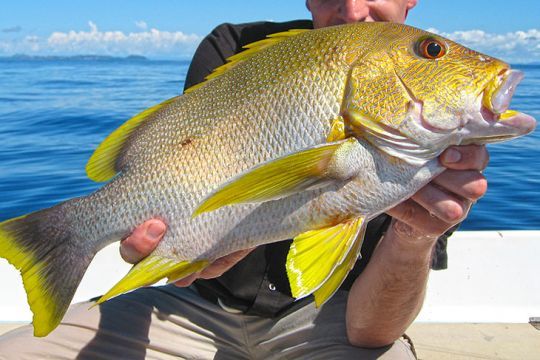
Good to know
Maori snapper has many local names that vary from place to place: Bourgeois doré, Madame tombé, Capitaine lev de b?uf, Capitaine maurice... They are solitary or congregate in groups of fifteen or so.






